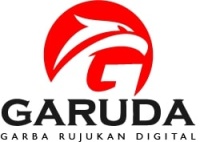The The Relationship Between Red Meat Consumption Patterns and Uric Acid Levels Among Congregants of Jami' YARSI Mosque and its Review from an Islamic Perspective
Abstract
Hyperuricemia is a condition characterized by elevated levels of uric acid in the blood, which can lead to health issues such as joint pain, impaired kidney function, and gout. One of the main causes is the consumption of purine-rich foods, including red meat. In Islamic teachings, food consumption not only considers nutritional value but also the halal aspect and the prohibition of excess to prevent harm. This study uses a quantitative method with a cross-sectional design. The sample consisted of 68 congregants of Jami’ YARSI Mosque who participated in a Medical Check-Up and met the inclusion and exclusion criteria. Data were collected using a closed questionnaire on red meat consumption patterns and uric acid levels measured with the Easy Touch GCU device. Results showed that among respondents with below-normal uric acid levels, 14 individuals (20.6%) had low risk and 9 (13.2%) had high risk. Among those with normal levels, 13 individuals (19.1%) had low risk and 1(1.5%) had high risk. For those with above-normal levels, 9 individuals (13.2%) had low risk and 22 (32.4%) had high risk. The Chi-Square test showed a p-value < 0.05, indicating a significant relationship between red meat consumption patterns and uric acid levels. From an Islamic perspective, maintaining health through dietary regulation, including meat consumption, is part of worship and a trust over the body. Therefore, education on healthy red meat consumption aligned with Islamic values is essential to prevent hyperuricemia risk.
Downloads
Published
Issue
Section
License
Copyright (c) 2025 Ayu Suciawaty Hamka, Sri Utami, Andri Gunawan

This work is licensed under a Creative Commons Attribution-ShareAlike 4.0 International License.

 Ayu Suciawaty Hamka
Ayu Suciawaty Hamka
 University of YARSI
University of YARSI

 TEMPLATE
TEMPLATE


